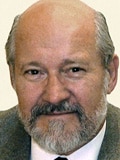
Stephan Helgesen
Isolationism takes many forms but always results in a loss, whether it’s a narrowing of perspective, retreat from relationships or the reduction of foreign aid.
In the last 62 years, the United States spent approximately $800 billion on foreign aid, with about 154 countries receiving it (Israel receives the most).
Helping the world’s needy wasn’t always a top American priority. Our most significant period of ideological isolationism was before our entry in WWI. After the armistice was signed, the League of Nations (the forerunner to the United Nations) was formed and America officially became a citizen of the world.
Our donor objectives were simple: Grow markets for our goods, help the disadvantaged, and spread democracy. At the end of World War II, the hawks of war were supposedly caged for good as we looked outward. In 1946, we gave 1.38 percent of our GDP ($3.08 billion) in foreign aid (most to the Marshall Plan and for Japanese reconstruction). In 1947, we doubled our aid to $6.71 billion and then, in 1948 abruptly reduced it to $3.18 billion.
There have been spikes along the way, most notably during the Cold War (military assistance counts as foreign aid) when we averaged $6.5 billion per year.
Our companies followed on behind America’s foreign aid commitments. Business took the Vietnam peace accords as a sign that Asia was open for business. One-world thinkers populated the State Department and other organizations like the Agency for International Development, the Voice of America, the World Bank and the IMF. The U.N. bureaucracy was still fairly manageable, and the UNDP was still pretty transparent.
It seemed we all had learned a valuable lesson: that aid would open markets and improve disposable incomes. It would also help attack some of mankind’s most pervasive problems like illiteracy, poverty, communicable diseases, addiction and famine.
Americans have always looked at foreign aid with a mixture of altruism and pragmatism, and our aid programs have reflected that attitude. We believe in aid that’s tied to outcomes and purchases, but we also believe in giving to multilateral organizations, though with some reluctance.
The 80s saw us level out our giving at about 0.35 percent of our GDP until the 90s, when we dropped to 0.25 percent. It seemed we were losing our appetite for donating. The new millennium started us out at 0.16 percent of our GDP, and we’re more or less at that same rate today.
Where does the money go?
There are five main types of assistance: bilateral development assistance (Congress appropriated $10.3 billion for this in 2008), economic aid supporting U.S. political and security objectives ($7.8 billion in 2008), humanitarian assistance ($4.2 billion in 2008), multilateral assistance ($1.6 billion in 2008), and military assistance ($5.1 billion in 2008). Add them up, and our total foreign aid in 2008 was $27.68 billion, or 0.19 percent of our GDP.
Compare that with the post-war years of 1946 (1.38 percent) and 1974 (0.57 percent) and you can see that at this pace we’ll soon be putting IOUs into the international collection plate.
There is a silver lining, though. Most U.S. foreign aid is used to procure U.S. goods and services. Of the FY2008 military assistance expenditure, 87 percent was used to procure U.S. military equipment and training. Food assistance commodities are purchased wholly in the United States, and most of the costs for shipping those commodities to foreign countries go entirely to U.S. freight companies.
On this basis, a rough estimate suggests that 90 percent of FY2008 U.S. food aid expenditures were spent in the United States.
If America is to survive this severe economic downturn, we will need to retrench and spend more money at home, but it is shortsighted of us to pull the plug on foreign aid when American companies are benefiting from the orders. While that may sound mercenary, it may be a mistake not to look at which barn this gift horse lives in.
Stephan Helgesen is the former director of the State of New Mexico Office of Science and Technology and a retired diplomat who worked in 24 countries. He is honorary German consul for New Mexico and CEO of Second Opinion Marketing, an Albuquerque-based high-tech consulting company.
